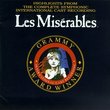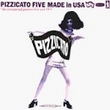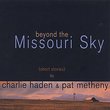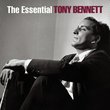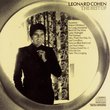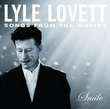| All Artists: Art Tatum Title: Complete Capitol Recordings Members Wishing: 1 Total Copies: 0 Label: Blue Note Records Original Release Date: 11/25/1997 Release Date: 11/25/1997 Genres: Jazz, Pop Styles: Swing Jazz, Traditional Jazz & Ragtime Number of Discs: 2 SwapaCD Credits: 2 UPCs: 724382132523, 724382132554 |
Search - Art Tatum :: Complete Capitol Recordings
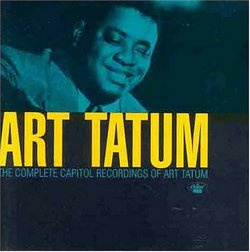 | Art Tatum Complete Capitol Recordings Genres: Jazz, Pop
All of Art Tatum's solo recordings are spectacular, and the 20 tunes he recorded for Capitol in 1949 are no exception. Each piece is subjected to Tatum's unique powers, with sudden rhythmic shifts, florid embellishments of... more » |
Larger Image |
CD DetailsSynopsis
Amazon.com All of Art Tatum's solo recordings are spectacular, and the 20 tunes he recorded for Capitol in 1949 are no exception. Each piece is subjected to Tatum's unique powers, with sudden rhythmic shifts, florid embellishments of the original melody, and cascading arpeggios that reach for, and achieve, new harmonic possibilities. Whether it's "Goin' Home," by Antonin Dvorak, or "Aunt Hagar's Blues," Tatum recasts his material into a complex, rhapsodic marvel. The final eight tracks are by a 1952 trio. While Tatum's momentum could carry a rhythm section, there's a special appeal to his group playing, a heightened sense of detail and a superbly relaxed swing. Everett Barksdale's light rhythm guitar keeps things sparking and Slam Stewart turns in some of his patented bowed bass work with accompanying humming, creating the illusion of a low-pitched kazoo. --Stuart Broomer Similarly Requested CDs
|
CD ReviewsBeautiful stuff from Tatum N. Dorward | Toronto, ON Canada | 10/28/2002 (4 out of 5 stars) "Art Tatum began recording in 1932, when he was only 22; though he often worked in groups, the core of his oeuvre is his solo performances. It's deeply unfortunate that his recorded legacy is sometimes hampered by indifferent sound & indifferent pianos, since Tatum had not simply a phenomenally fast technique but, more importantly, a gorgeous sound on the piano; so for me much of the attraction of this set is that it's among the few occasions where Tatum got a great piano & excellent studio sound. Twenty tracks here are piano solos, dating from 1949. These include a rare instance of Tatum's playing the blues, on WC Handy's "Aunt Hagar's Blues"; this is a well-known track among many jazz musicians because it's one of the few Tatum solos to present few obstacles to transcription & reproduction! (See the transcription in John Mehegan's well-known theory books.) Tatum played many of these tunes over & over again--there are countless recordings of "Sweet Lorraine" for instance--& while it's true that he basically stuck to a set arrangement & development for such tunes, no two versions are exactly alike. These recordings don't, I think, quite find Tatum at his best--the 1930s recordings have an extra ounce of razor-sharp precision (a fast piece like "How High the Moon" on here--admittedly a previously unreleased title--comes off as inevitably impressive but a bit sloppy by Tatum's standards). Yet it's hard not to be charmed by his readings of a mostly fairly straightforward pick of standards (only "Dardanella" & "Goin' Home" are unusual choices here), including the gorgeous minor-key essays on "Willow Weep for Me" & "Blue Skies". (Incidentally there's a closing figure on "Blue Skies" which is directly related to the ending phrase of Monk's "In Walked Bud"....which is based on "Blue Skies" of course. So does this mean Monk picked it up from Tatum? -- Elsewhere on this recording there are passages which seem to me to have clearly been studied by Bud Powell.)To my mind Tatum's at his best at a fairly relaxed tempo, getting deep into a groove despite the abrupt interpolations of cadenzas. This perhaps explains why I'm not very keen on the final 7 tracks here, which date from 1952 & feature Tatum's working trio (Everett Barksdale on guitar, & Slam Stewart on bass). Tatum never felt he had to scale down his style for a group situation, & I've usually found that this leads to clashing floods of notes in the interaction with the guitar especially. But also, the music gets perilously close to mere novelty music in the music-box speed & archness with which all of the tunes are treated (the worst instance being, predictably enough, the jazzing of the light-classical piece "Melody in F" by Rubenstein). Tatum could have perhaps taken a page from Nat King Cole's trio of this period, which used the same format to deliver some incomparably minimalist, cooled-out jive.Despite this, & despite one other flaw (an irritating background whistle that afflicts a couple tracks on CD 1) this is an essential & enjoyable set of CDs. I rather wish they'd jettisoned the stilted & unrevealing promotional interview at the end of CD 1 (which does little more than name the titles on the disc & give Art an opportunity to plug Steinway), & squeezed this down to a single CD--both CDs just barely crack the 40-minute mark--but the twofer is priced reasonably & this is music that's both immediately pleasurable & worth studying closely." Pure genius! G. Sawaged | Canada | 06/14/2001 (5 out of 5 stars) "Wow, is this ever a brilliant 2 cd set! 29 tracks, 19 of them solo, 9 are with Everett Barksdale on guitar, and the "Singing Bass" of Slam Stewart. Also, track 15 on cd 1, is a promotional interview with Art Tatum and Paul Weston. The album has been remastered using 20-bit Super Bit Mapping, so the sound is very good. The booklet contains a 4 1/2 page essay by Pete Welding which is very informative. Tatum really was a musical genius, and for anyone who loves jazz piano, this album is a must." Review of Art Tatum's Complete Capitol Recordings J. E. Hazell | texas | 03/21/2006 (5 out of 5 stars) "For sheer piano virtuosity, it is unlikely you will hear anything more impressive than Art Tatum. Every piece on this 2-disc set will at some point leave you slack-jawed, amazed that someone could play so fast and yet so crisply. You should be aware that although Tatum was a jazz pianist, these pieces are not funky, improvised jam sessions you can dance to, but are instead fully arranged, classic standards, written by the likes of W.C. Handy, George Gershwin, and Irving Berlin - it's not like your parents are going to be shouting, "turn down that noise." All pieces are Tatum unaccompanied, except for the last eight, which also feature a bassist and guitarist. My only criticism is that sometimes it appears Tatum believed he was getting paid by the note. It's worth noting that a Washington Post music critic considers this one of the best jazz albums of all time."
|

 Track Listings (15) - Disc #1
Track Listings (15) - Disc #1